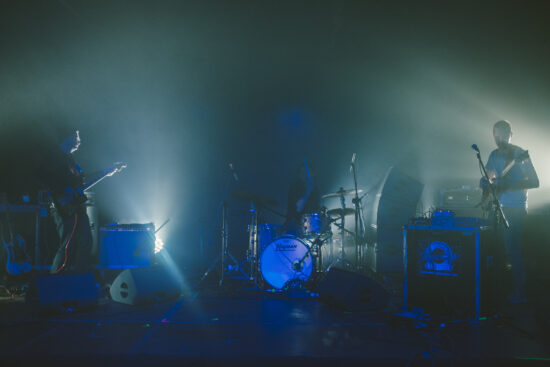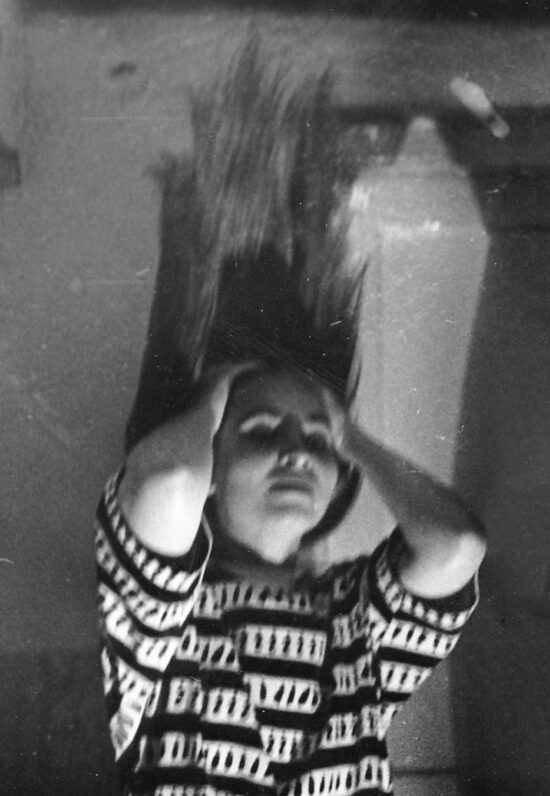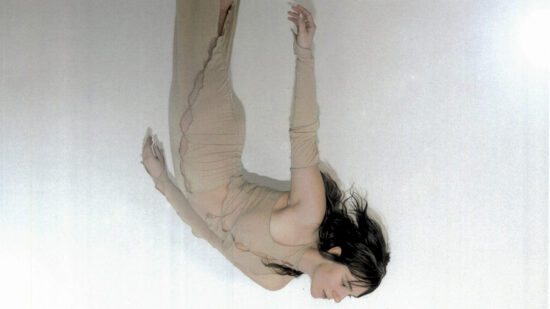Pleasant, casual meetings usually bring the best results. But sometimes things can go a bit revolutionary too. Here are the most interesting jazz and jazz-like albums of the last weeks and the start of a new series: The Magnificent 7.
Translation: Aleksandra Szkudłapska
Chicago Underground Quartet, Good Days, Astral Spirits
Chicago Underground Quartet had us wait two decades for their second full-length album, which features a slightly altered line-up – with Josh Johnson (instead of Noel Kupersmith) appearing alongside Rob Mazurek, Jeff Parker and Chad Taylor. In the meantime, though, the musicians have met time and again in various constellations, including several incarnations of Chicago Underground. According to Chicago Reader, the material appearing on Good Days was created on the go, not as a result of some long-planned endeavour.Everything is in place here, though, not just in terms of the participating musicians – the album brings to light a set of tracks created at various points in time, which span a broad musical spectrum. Already Alan Shorter’s unruly, opening “Orgasm”, arranged by Taylor, sees the musicians in top form. It is followed by the trance of “Strange Wing”, the longest track on the album, and possibly the best example of Johnson’s switch from the double bass to Rheem Kee Bass, vigilantly accompanied by Parker’s spacious guitar. The quartet’s eclecticism is crystal clear here: sharp and concise rhythmical playing juxtaposed with the open form of effect-laden guitar passages. This steadily growing number is brilliantly counterpointed by the slightly buzzing, lyrical ballad “Good Days”, written by Parker especially for Mazurek. In turn, “Batida”, with its characteristic groove, is the only piece specially composed for this session of the quartet – the amazing flow of the musicians playing together is genuinely impressive here as they create a vibrating, musical ambience. This impression stays with you throughout the entire album: brilliant fluency, fantastic instrumentalists, consistent and colourful narratives – both in collective moments (such as the intriguing opening to “Unique Spiral”) and solos (Mazurek’s amazing “All the Bells” or Tylor’s indigenous “Lomé”). This is the essence of Good Days – pleasant, casual meetings usually bring the best results.
Grzegorz Tarwid, Plays, KOLD
Grzegorz Tarwid, one of the most interesting pianists of the young generation, has performed with several ensembles: Sundial (with Wojciech Jachna and Albert Karch), Franciszek Pospieszalski Sextet, more recently also Alfons Silk (with Szymon Gąsiorek). He also shared the stage with Marcin Masecki, Jan Młynarski, Macio Moretti, Zbigniew Namysłowski or Maciej Obara. Plays is his solo debut – short, but substantial, whetting my appetite for more. Compared to his previous work, the album sounds very surprising, as if Tarwid wanted to show us the boundaries of his musical language– and where he is willing to cross them, in the three etudes and one live recording that last but half an hour. The pianist presents a whole gamut of his instrument’s timbres and moods – the stormy, avant-garde opening is contrasted with the more lyrical “Etude II”, although this, too, is full of glitches and polyphonic touches. At times, it’s hard not to think of the aforementioned Masecki here – both because of the form and playing style. Tarwid is fully authentic, though. What he does is fresh, and the freedom with which he presents his ideas is truly impressive – whether in short compositions or the longer ones. The minimalist “Etude III” is racing forward, increasing in layer after layer of trance wave forms. The pianist skilfully meanders at the crossroads of classical, improvised and avant-garde music, reminding me of the Lado ABC crew – he builds a rich spectrum of sounds and keeps searching for his unique language, discovering its hitherto unknown corners. On stage, he seems calm, perhaps even a little shy – on the record, I hear the reverse of this personality. The title, Plays, is very telling – he’s just playing here, right?With courage, freedom, substance and a lot of character.
Ville Herrala, Pu, We Jazz
Last year, I wrote about rhythm musicians transgressing stereotypes. Ville Herrala may be seen as part of that trend, although his task is more daunting, because the bassist is going it alone. His debut – released by We Jazz, a label that’s doing a great job revamping the European jazz scene – shows that this is a musician whose head is literally exploding with ideas about how to use the double bass. Pu is a set of short suites (the longest lasts little more than three minutes), so the sound ideas don’t have the slightest opportunity of getting boring. Herrala moves on many planes: he can be sparse, oscillating on ambient (“Pu 3”), he can cumulate sounds with the strokes of his bow (“Pu 2”), but he is also eager to explore sonorism (“Pu 4”). The musician has taken a “carte blanche” approach to the double bass, as if he didn’t want to look at it from any single aesthetics – hence the instrument sounds different in each track. At times, it seems to be almost boiling, the sounds explode and seem to divide into separate layers, all the while maintaining their free character (“Pu 5”), at other times, the music takes a nod at dignified Baroque (“Pu 8”) or – having abandoned all frameworks of reference altogether – approximates a sound-art installation, a breathing organism that threatens to burst at any given moment (“Pu 9”). I have no idea to what extent this is the result of an improvised session or a meticulously planned exploratory process, but the Finn’s miniature pieces create a brilliant and engrossing double bass soundscape. Herrala keeps up the pace of the narrative throughout, explores the wooden sound box, entrancing us with each new incarnation of his instrument. I, for one, am hooked.
Irreversible Entanglements, Who Sent You?, International Anthem
The music of Irreversible Entanglements oozes with boiling anger and reluctance to accept the current social and political realities in the US. This direction was already visible in their first album from 2017, and Who Sent You? is an apt follow-up. The album explodes, screams, and reaches for the listeners, almost literally pulling their ears. At first sight, it could seem that the project is run first and foremost by Camae Ayewa, known as Moor Mother, whose urban poems comment on the present-day situation. But this line of thinking is wrong, as Irreversible Entanglements are a band, and this collective spirit shines through: the fidgety rhythm section composed of bass player Luke Stewart and drummer Tcheser Holmes brilliantly corresponds with the missiles launched by Aquiles Navarro’s trumpet and Keir Neuringer’s saxophone. This is best heard in the roaring title suite: the rhythm is first to occupy the space, soon entered by the brass instruments, locked in an eager exchange. “Who sent you?” screams Ayewa – ecstatically, mantrically, and alarmingly reminding us about the voice of the marginalised, directly addressing those who are behind most of the tensions, asking why they’re treating people of colour like that. For a change, the dense, trance bass and fascinating, slightly krautrock-inspired drumming in “No Más” and “Bread Out of Stone” sound near ritualistic. Irreversible Entanglements are a revolutionary band whose music and lyrics can be used to paint protest banners (in fact, they all first met at a demonstration). This is free jazz that knows perfectly well where it’s going, heading back to the protest-music traditions to express anger at the way the state and religious ideologies are operating (“Pop must be drunk,” screams Ayewa in “Blues Ideology”). Compared to their debut, Who Sent You? reveals traces of spiritual jazz, and the five tracks evoke the spirit of Ornette Coleman, Sun Ra, but also Gil Scott-Heron and Max Roach. This is post-free-jazz, because – as the band indicate in the sleeve notes – sonically, they find themselves in the post-Katrina, post-Osage Avenue and post-Obamacare reality. Given the current pandemic, the latter is particularly poignant. “Stay on it,” shouts Ayewa at the beginning of the album, as if paying tribute to Julius Eastman, having the listeners standing to attention. “Don’t give up,” she hastens to add. And the music of Irreversible Entanglements has the power to mobilise you to follow suit.
Błoto, Erozje, Astigmatic Records
The story behind Błoto (Polish for “mud”) seems almost improbable, with one coincidence following another – between playing live sets, one half of EABS decided to record a live session. Unfortunately, the studio in Gdańsk they initially picked was unavailable, but, with a stroke of luck, they managed to immediately secure another, where they spontaneously recorded their muddy tale – the most important thing, after all, is not to fall out of rhythm. This is what’s vital here: the swinging, trance, urban rhythm, with a clear groove, reminding me a little of hip-hop. In February, they played at an event devoted to J Dilla, and his beat aesthetics seem to be a clear influence in their music. Contrary to the lyrical and polished EABS (which didn’t really appeal to me), here the music is dense and raw, spanning the space between Marcin Rak’s drumming and Paweł Stachowiak’s bass. The musical soil is layered, though – from the colourful, cheeky keyboards played by Marek Pędziwiatr (the brilliant “Czarne ziemie” – a pun combining “black lands” and the fertile chernozem soil) to Olaf Węgier’s saxophone serenades. Subsequent tracks are like a high-school geography test – the interlaced titles remind us that this is the kind of music that’s down to earth, close to the soil or pavement. Street music. Had it not been for the improvised session (which sounds very coherent and structurally sound), which enforced breaks between tracks, this could have been released as a mixtape – the flow of the musicians and elegant mood twists would really make it work. The quartet often builds very evocative visions (“Ziemie zdegradowane przez człowieka”, i.e. Human-degraded lands) but subsequent layers of soil also reveal a turmoil of buzzing emotions, with the music drilling ever deeper. Although their style is markedly different, they’d surely find a common language with the aforementioned Irreversible Entanglements. Błoto is sticky, impermanent and ephemeral, but also beguiling, which you’ll hear on “Glina” (Clay but also Cops in polish – look at the cover), the strongest point of the entire album, whose title is very ambiguous, reminding us about the true place of music. In case you’ve forgotten, the dense, rhythmical journey across Erozje (Erosions) will bring you up to speed.
Nakata, El Sueño de Lilith, Atlantic Rhythms
El Sueño de Lilith – like in the case of Błoto – was recorded live when the band was touring. Paco Casanova and Patrick Shiroishi are an usual duo – they play a lot, but publish even more (Casanova with Prettiest Eyes, among others, and Shiroishi has already released three albums this year, in various configurations). What is more, here we’ve got a keyboard player and saxophonist who combine their instruments in a very original way.The acoustic saxophone sound is interlaced with highly electrified keyboards and overlapping effects. The record begins with an ambient-drone vibe, but soon afterwards the structure becomes denser, taking on a slightly futuristic character, and the two musicians improvise, creating a thick electroacoustic layer. Casanova often builds uniform, lengthy sonic patches, against which Shiroishi’s saxophone stands out with its drawn-out phrases (this is brilliantly exposed starting from minute four of “The Flood Invades My Spirit Pt. 1”, which successively develops). Yet there are moments when this extended form changes to a more broken structure, and electronics take centre stage, with the saxophone moved to the background (from minute nine). The almost 30-minute-long recording is rather unfortunately divided – in the opening of “The Flood Invades My Spirit Pt. 2” both musicians play more compulsively, even ecstatically. Stretches of acoustic space become smaller, the music sounds as if it was moving closer to the speakers, the composition becomes more dense, as if arriving at its maximum point. In the finale, the narrative calms down, and the album reaches a tranquil conclusion. This short, yet evocative recording offers a colourful path from ambient strips of noise, through free-jazz variations, to cumulated sounds. This is a spontaneous meeting, with aptly weighed proportions: from peace to excitement. Another amazing release in the Atlantic Rhythms catalogue.
Oxana Grigoreva / Peter Ototsky / Sergey Bolotin / Andrey Kim, Drumazhur, ТОПОТ
I’m not at all familiar with the improvised Russian scene, but I have a feeling this may well change because of the Moscow-based ТОПОТ label. Although ТОПОТ often reach beyond Russia – in October, they released an album by Das B, a quartet I saw 3 years ago at Konfrontationen festival – I was absolutely overwhelmed when listening to their latest release. Drumahzur is an effect of cooperation between four drummers: Oxana Grigoreva, Peter Ototsky, Sergey Bolotin and Andrey Kima. According to sleeve notes, they were inspired by a musical performance 77 Boa Drum given 13 years ago by Boredoms, but their music was also inspired by the circumstances – they played in a public space, the rotunda of Moscow’s Gorky Park. Everything sounds very raw here, purely acoustically, with occasional voices of passers-by in the background, but – above all – this is all very intense. Four drum sets could introduce chaos or overlap with each other, but when I listen to this recording, I have no such impression – depending on which elements of the drum kit are used, the music sounds like a constantly growing organism. The microphones were most likely placed directly between the musicians – which brilliantly emphasises the stereophonic sound thanks to which we’re able to hear the music as if we were standing in the middle of the group. The drummers deliver amazing nuance in terms of detail, sometimes verging on sonorism. They are able to hit hard too, though, in the Boa Drum style, which is perfectly exemplified by “Ma” – the longest, entirely abstract and explosive track – which reminds me of a more improvised incarnation of Oneida. On the other hand, though, we have “Zh”, where the line-up is joined by a brass section counterpointing the hard and stable drum sound. While the album may seem ever so slightly too long, it is by no means waffly – it evocatively conveys the atmosphere of this musical meeting and its resonance in the public space; a living site-specific organism in the urban space. While it must have been amazing to take part in this event live, listening to the results at home is no less exuberant an experience.




